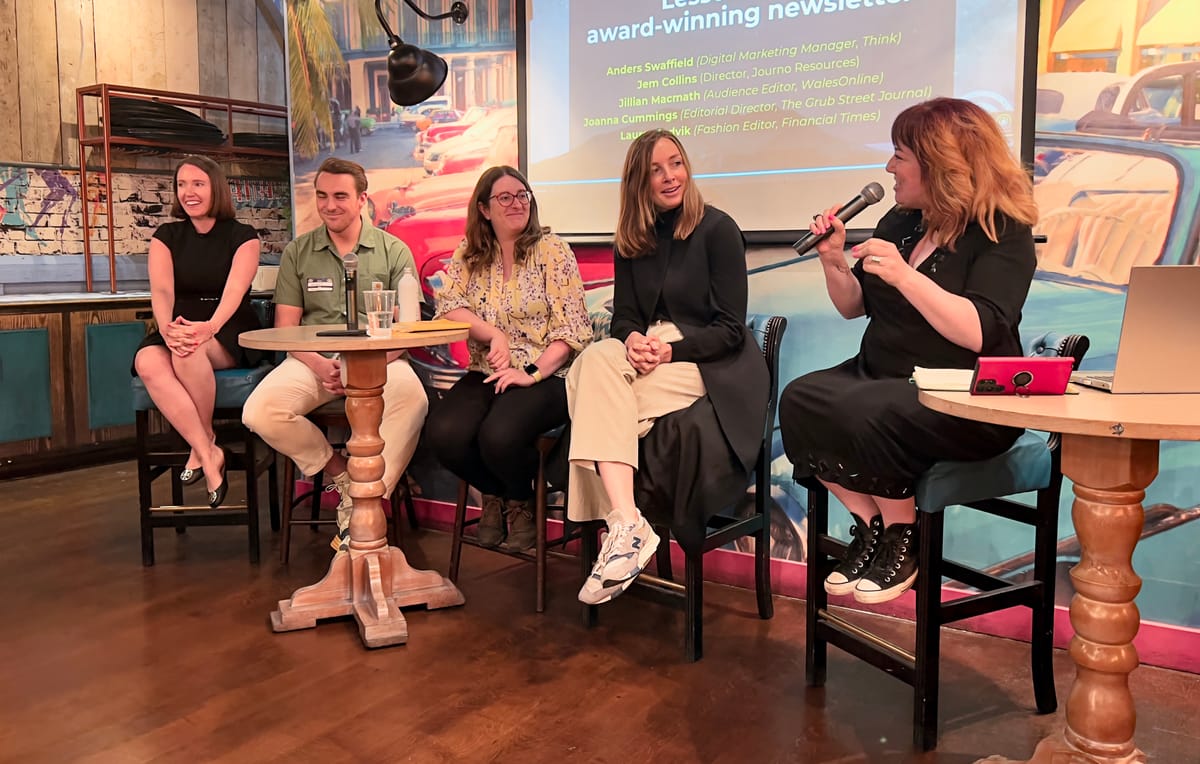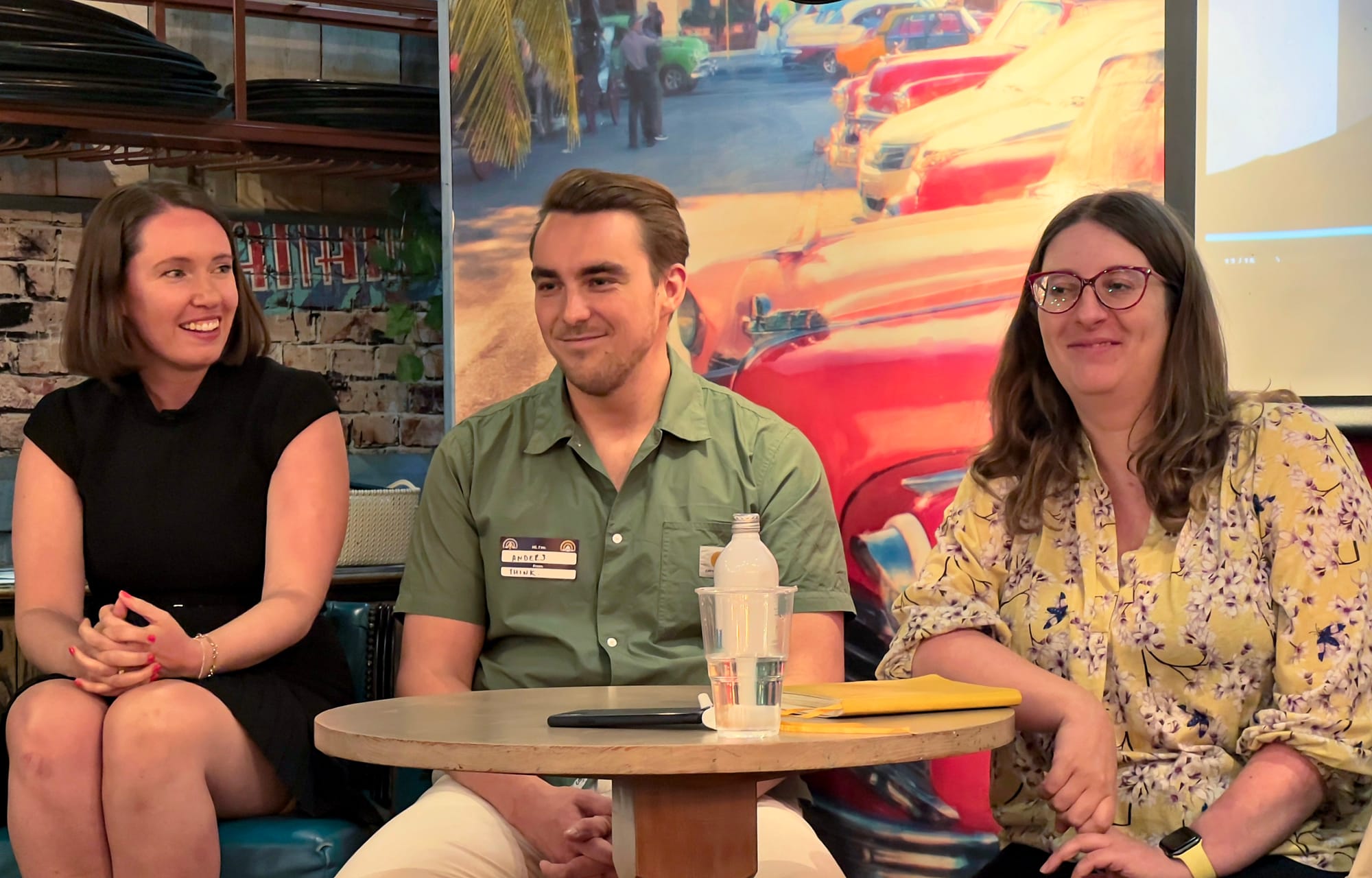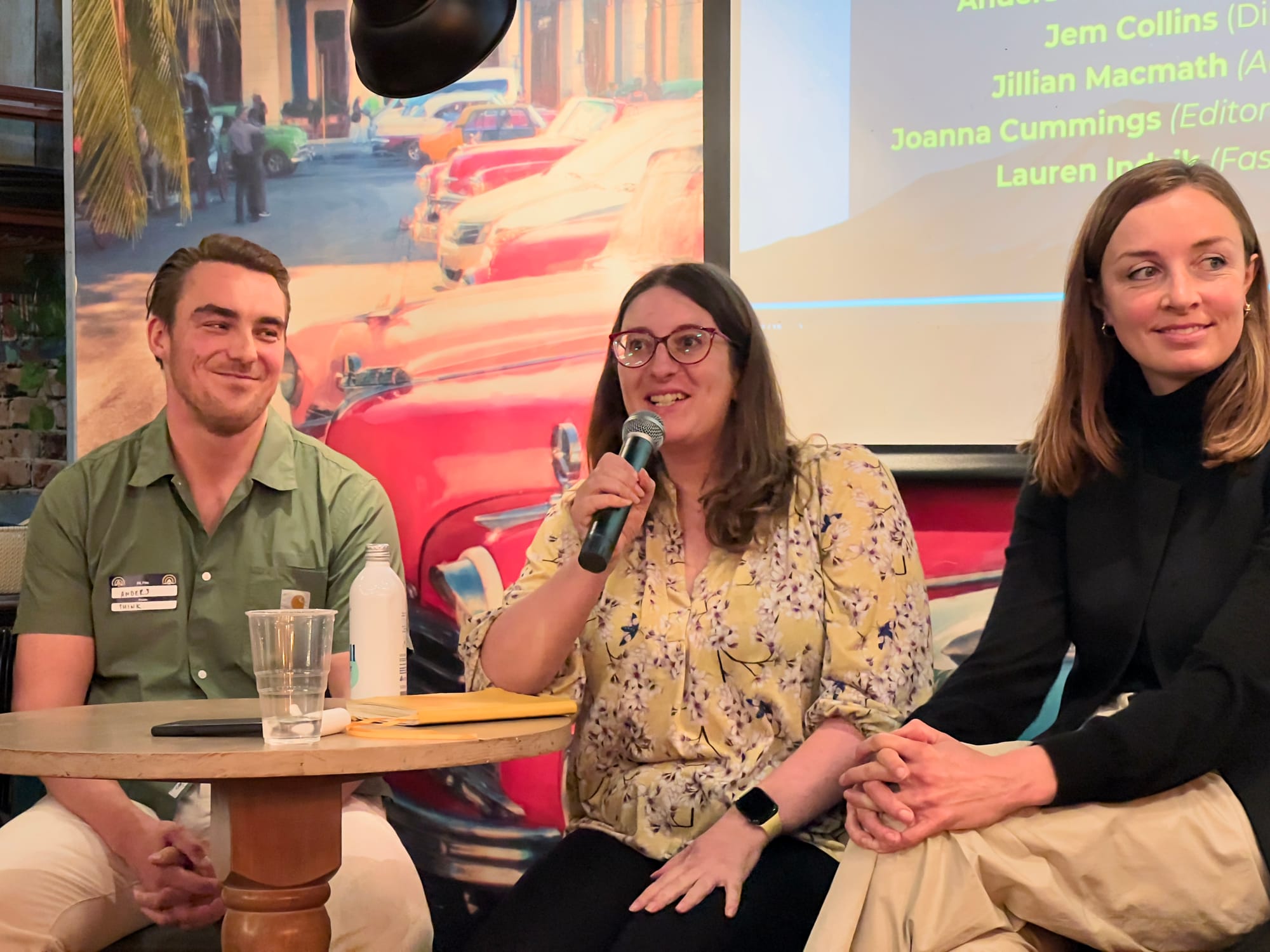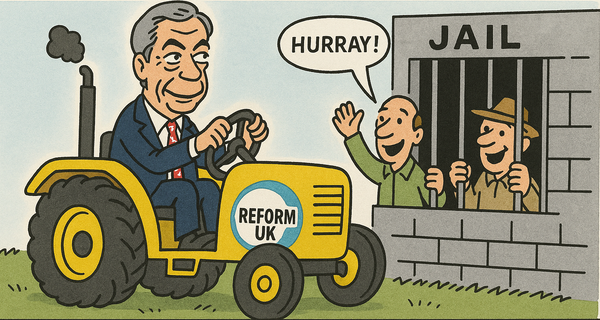Lessons from award-winning newsletters
What are the secrets of a good newsletter? What should you measure - and how much should you listen to your audience? Here’s some answers from the very best newsletter publishers.

Notes from the final panel at the Publisher Newsletter Summit, sharing lessons from people who have won awards for their newsletters.
The Panel
- Jillian Macmath (Audience Editor, WalesOnline)
- Anders Swaffield (Digital Marketing Manager, Think)
- Jem Collins (Director, Journo Resources)
- Lauren Indvik (Fashion Editor, Financial Times)
- Chair: Joanna Cummings (Editorial Director, The Grub Street Journal)
Lauren joined the FT over four years ago, and before that was part of the launch team for Vogue Business. But when she arrived at the FT, she was denied the chance to launch a newsletter initially. However, resistance waned, and eventually, they did launch. There are a lot of really great fashion industry newsletters — so this one doesn’t target them. It focuses on people who are interested in luxury fashion, but don’t read the dedicated fashion press. It’s a subscriber-only newsletter — so it’s ben getting people interested in the fashion business who were never interested before.
Jem is the only full-time member of the team, so they don’t have the resources to run separate newsletters for all the segments of their audience. So they structure the newsletter to make it really easy to find the section that’s relevant to them. They use both the hard click data and the softer qualitative data of asking readers question to understand why people are doing what they’re doing. “I’d like to think we have a community. Our wider business as a whole came from this newsletter, so we think of it as a super personal medium. All the jobs in the newsletter are hand-picked by a person,” she says.
Anders produces the Mensa newsletter — but he does so as a content agency. It’s a highly intelligent and opinionated audience. So, they pay a lot of attention to the data to see what topics are engaging with the audience and which aren’t. The data often differs wildly from what the readers claim they want.
Jillian oversees around 20 newsletters across the brand. Every newsletter has an office champion that oversees it, and watches out for the content that will end up populating it. Some newsletters have a named face as the lead, but not all for them. Some will be led by whomever’s beat is most prominent that day.
Mistakes made — and learnt from

Four years ago, when WalesOnline started getting serious about newsletters, they tried to launch newsletters for everything. They quickly realised that they needed to focus down to a smaller group that they can manage with more attention given to each.
Fashion Matters could possibly have done with more market research before they launched. Lauren was involved in more of that before the launch of Vogue Business, so she’s ended up focusing more on user feedback, and getting non the phoenix or having a coffee with readers. But the newsletter audience have ended up as great sources of stories, or comment for features.
Journo Resources has learnt you shouldn’t be afraid to experiment — but also be confident to dump things that don’t work. Timing the newsletter is critical, especially for a newsletter that’s about jobs. The evening send means that people are less likely to be sat with their boss when they get it… Their website is a desktop product, but email is more mobile.
The Mensa newsletter is segmented by location. People in London open it at different times to those in Norfolk…. They have a constant battle with open rates, as one newsletter that’s they don’t like can drive down those rates. They solicit feedback in every issue. Not only that, but they got so many replies that Mensa have now launched a community platform. Their demographic is generally older over 60 — but they’re working to change that.
Success metrics for newsletters

For WalesOnline, their biggest success factor is audience retention. On the business side of things, Journo Resources watches long-term engagement. 60% of people subscribed three years ago opened the latest issue. But the building of community is the most important aspect because that leads to memberships.
Fashion Matters is ranked by open rate, as are all FT newsletters. For Lauren, getting more FT readers interested in fashion is the biggest success. Anders is in a process of constant learning. “As an agency, we can learn from one newsletter and ply it to another,” he says. “But MENSA probably care more about how they engage once they’ve clicked through from the newsletter.”
One Takeaway for newsletter publishers
- Anders: test every single newsletter you send, whatever test you do, from subject lines, to the point size of a CTA button
- Jem: whatever you’re doing, remember people are selfish, and make sure you are delivering what they get a real, tangible benefit from.
- Jillian: don’t be afraid to change things. Newsletters really are a long game. For example, their COVID-19 newsletter was rebranded as a health newsletter, and that worked. “Don’t throw in the towel too quickly,” she says.
- Lauren: foster dialogue with the readers. Don’t just give them a two word reply. Treat your readers as individual people, who are important — respond and ask if they can share it in the next newsletter.





